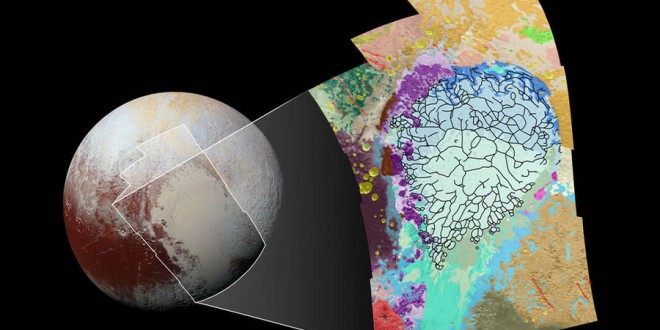Scientists have gotten straight to the heart of Pluto, striving to explain the dwarf planet’s geological complexity and evolution. Pluto’s iconic “broken heart” region is again in the scientific spotlight on a newly-released NASA colored map.
Trying to learn more about the mysterious area and understand its surface, NASA scientists have mapped terrain on the “broken heart” region in different colors.
“This map covers a portion of Pluto’s surface that measures 1,290 miles (2,070 kilometers) from top to bottom,” a NASA press release said.
Each patch of color stands for a certain type of terrain, different in their geological morphology – uplands, plateaus, smooth lowlands, etc.
“Producing such maps is important in gauging what processes have operated where on Pluto, and when they occurred relative to other processes at work,” NASA stated.
In July 2015, NASA New Horizons space probe came within 12,500 kilometers of Pluto, becoming the first spacecraft to explore the dwarf planet.
In October, NASA said that an analysis of the data transferred by New Horizons revealed that Pluto has blue atmospheric hazes and numerous small exposed regions of ice water on its surface.
Pluto's water ice hills “float” in a sea of frozen nitrogen & move over time like icebergs: https://t.co/1hxl26xcAy pic.twitter.com/c5MCxO37wg
— NASA (@NASA) February 4, 2016
Agencies/Canadajournal
 Canada Journal – News of the World Articles and videos to bring you the biggest Canadian news stories from across the country every day
Canada Journal – News of the World Articles and videos to bring you the biggest Canadian news stories from across the country every day



